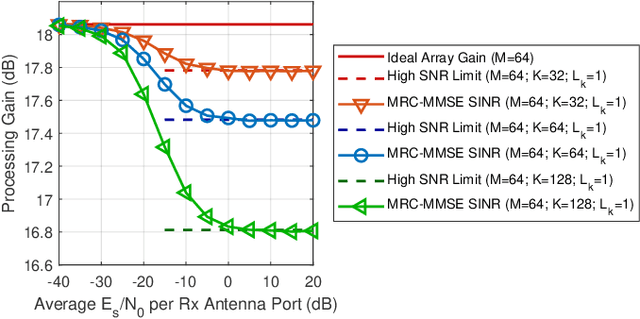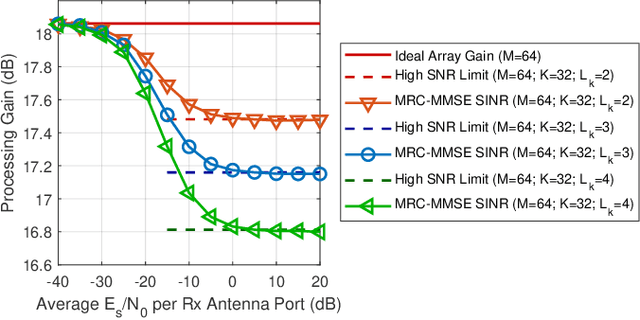Hussein Moradi
Idaho National Laboratory
Filtered Multi-Tone Spread Spectrum with Overlapping Subbands
Mar 26, 2025Abstract:A new form of the filter bank multi-carrier spread spectrum (FBMC-SS) waveform is presented. This new waveform modifies the filtered multi-tone spread spectrum (FMT-SS) system, and is intended to whiten the power spectral density (PSD) of the transmit signal. In the conventional FMT-SS, subcarrier bands are non-overlapping, leaving a spectral null between the adjacent subcarrier bands. To make FMT-SS more appealing for a broader set of applications than those studied in the past, we propose adding additional subcarriers centered at these nulls and thoroughly explore the impact of the added subcarriers on the system performance. This modified form of FMT-SS is referred to as overlapped FMT-SS (OFMT-SS). We explore the conditions required for maximally flattening the PSD of the synthesized OFMT-SS signal and for cancelling the interference caused by overlapping subbands. We also explore the choices of spreading gains that result in a low peak-to-average power ratio (PAPR) for a number of different scenarios. Further reduction of the PAPR of the synthesized signal through clipping methods is also explored. Additionally, we propose methods of multi-coding for increasing the data rate of the OFMT-SS waveform, while minimally impacting its PAPR.
UWB Narrowband Interference Survey and Design Considerations
Nov 11, 2024Abstract:A study of interference caused by incumbent radios to UWB devices is presented. Through an extensive set of measured spectral activities in the low-band IEEE802.15.4 UWB operating channels, we explore the outage probabilities of a UWB system when it is equipped with an intelligent detector for combating interferers and compare them against those of a naive system that has no interference avoidance capability. Our results reveal that a UWB system with an effective interference avoidance capability may lead to a few orders of magnitude improvement in its outage probabilities. The measured outage probabilities are confirmed through measuring the frame error rate of a simulated filter-bank UWB transceiver system when impacted by the interferences obtained through our experiments.
Filter-Banks for Ultra-Wideband Communications: Advantages and Design Challenges
Nov 08, 2024Abstract:Recently, filter-bank multicarrier spread spectrum (FBMC-SS) has been proposed as a candidate waveform for ultra-wideband (UWB) communications. It has been noted that FBMC-SS is a perfect match to this application, leading to a trivial method of matching to the required spectral mask at different regions of the world. FBMC-SS also allows easy rejection of high-power interfering signals that may appear over different parts of the UWB spectral band. In this paper, we concentrate on the use of staggered multitone spread spectrum (SMT-SS) for UWB communications. SMT makes use of offset quadrature amplitude modulation (OQAM) to transmit data symbols over narrowband, overlapping subcarrier bands. This form of FBMC-SS is well-suited to UWB communications because it has good spectral efficiency and a flat power spectral density (PSD), resulting in good utilization of the UWB spectral mask. Additionally, we explore new methods for multi-coding that result in higher bit rates than previous FBMC-SS systems. Moreover, we study methods for equalizing the UWB multipath channel and cancelling narrowband interference. Excellent performance of the proposed methods are substantiated by presenting simulation results.
Multicarrier Spread Spectrum Communications with Noncontiguous Subcarrier Bands for HF Skywave Links
Sep 15, 2024Abstract:Growing traffic over the high-frequency (HF) band poses significant challenges to establishing robust communication links. While existing spread-spectrum HF transceivers are, to some degree, robust against harsh HF channel conditions, their performance significantly degrades in the presence of strong co-channel interference. To improve performance in congested channel conditions, we propose a filter-bank based multicarrier spread-spectrum waveform with noncontiguous subcarrier bands. The use of noncontiguous subcarriers allows the system to at once leverage the robustness of a wideband system while retaining the frequency agility of a narrowband system. In this study, we explore differences between contiguous and noncontiguous systems by considering their respective peak-to-average power ratios (PAPRs) and matched-filter responses. Additionally, we develop a modified filter-bank receiver structure to facilitate both efficient signal processing and noncontiguous channel estimation. We conclude by presenting simulated and over-the-air results of the noncontiguous waveform, demonstrating both its robustness in harsh HF channels and its enhanced performance in congested spectral conditions.
Resource Allocation for Single Carrier Massive MIMO Systems
Feb 28, 2022



Abstract:Resource allocation in orthogonal frequency division multiplexing (OFDM) systems is performed through allocating blocks of subcarriers to each user. Even though OFDM is the primary waveform for 5G NR systems, research reports have noted that single carrier modulation (SCM) offers several advantages over OFDM in massive multiple input multiple output (MIMO) systems, making it a preferred candidate for some future applications such as massive machine type communications (mMTC). This paper presents a method for SCM resource allocation and the relevant information recovery algorithms at the receiver. Our emphasis is on cyclic prefixed SCM, where highly flexible and efficient frequency domain detection algorithms enable the operation of many simultaneous users in a massive MIMO uplink scenario. The proposed resource allocation method allows the number of users to exceed the number of antennas at the base station (BS). Each single carrier transmission is partitioned into $L$ interleaved streams, and each user is allocated a number of such streams. One major benefit of SCM is that each data symbol is spread over the entire bandwidth. As such, the receiver performance is dictated by the average channel gain across the transmission band rather than the channel gain at a given frequency bin or a small group of frequencies. In the proposed setup, each stream may be thought of as a resource block in SCM, analogous to resource blocks in OFDM. Hence, in the context of this paper, the terms resource blocks and streams may be used interchangeably.
Efficient Precoding for Single Carrier Modulation in Multi-User Massive MIMO Networks
Mar 13, 2021

Abstract:By processing in the frequency domain (FD), massive MIMO systems can approach the theoretical per-user capacity using a single carrier modulation (SCM) waveform with a cyclic prefix. Minimum mean squared error (MMSE) detection and zero forcing (ZF) precoding have been shown to effectively cancel multi-user interference while compensating for inter-symbol interference. In this paper, we present a modified downlink precoding approach in the FD based on regularized zero forcing (RZF), which reuses the matrix inverses calculated as part of the FD MMSE uplink detection. By reusing these calculations, the computational complexity of the RZF precoder is drastically lowered, compared to the ZF precoder. Introduction of the regularization in RZF leads to a bias in the detected data symbols at the user terminals. We show this bias can be removed by incorporating a scaling factor at the receiver. Furthermore, it is noted that user powers have to be optimized to strike a balance between noise and interference seen at each user terminal. The resulting performance of the RZF precoder exceeds that of the ZF precoder for low and moderate input signal-to-noise ratio (SNR) conditions, and performance is equal for high input SNR. These results are established and confirmed by analysis and simulation.
 Add to Chrome
Add to Chrome Add to Firefox
Add to Firefox Add to Edge
Add to Edge